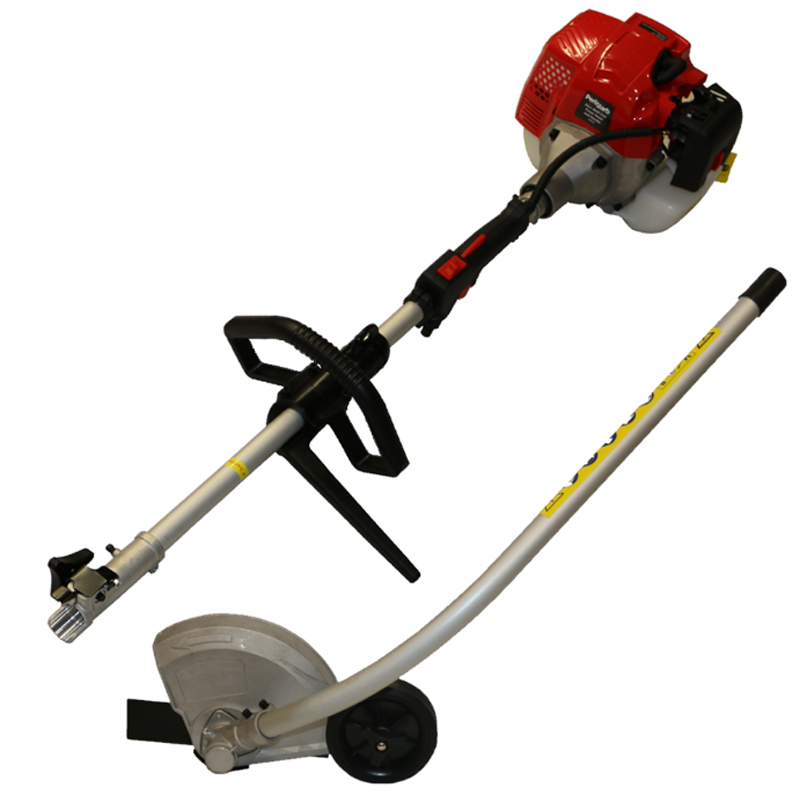Tips and Tricks for a Top-Performing Brush Cutter
Brush cutters are a popular choice for maintaining neat lawns and gardens, but they can be prone to blade damage. Even a small rock can cause a blade to break, leaving you scrambling to replace it. Regular maintenance is essential to keep your brush cutter running smoothly and safely. Here are some key tips to help you handle your whipper snipper the right way. From daily checks to monthly overhauls, understanding how to maintain your equipment can save you time, money, and frustration in the long run. To keep your whipper snipper in top condition, regular maintenance is crucial. Some tasks should be done daily, while others require weekly or monthly attention. By staying on top of these tasks, you’ll ensure that your brush cutter performs efficiently and lasts longer.  Daily checks should include inspecting the air filter, trimmer head, blades, and guards. Replace the air filter every 25 hours of use or when it becomes too dirty to function properly. Dull or damaged blades not only reduce efficiency but also increase vibration. Always perform a quick visual check before each use—look for cracks and ensure the blade is centered and sharp. Similarly, make sure the trimmer head is undamaged. While guards typically last a long time, they’re there for your safety, so replace them if you notice any signs of wear or damage.  Once a week, clean the spark plugs, cooling fins, and carburetor. Change the oil every 50 hours or once per season, depending on usage. Lubricate moving parts every 25 hours to prevent rust and damage. When cleaning the spark plug, remove it and inspect for wear or deposits. Replace it if needed to ensure smooth starting and operation.  Perform a full maintenance routine once a month. This includes cleaning the fuel tank, fan, and carburetor. The fuel filter should be replaced after 100 hours of use to prevent clogging and ensure proper engine performance.  Blades are one of the most important components of a brush cutter. If they're worn or damaged, your machine won't work as well. Follow these steps to replace them:  There are three main types of brush cutter blades, each suited to different tasks. Chisel blades have sharp teeth and are ideal for cutting through tough brush and small trees. However, they are more expensive and require more power to operate effectively. Mulching blades are less common and designed for mulching leaves, making them harder to find. Knife blades are the most widely used type. They feature a sharpened edge and are suitable for general-purpose use. They are cost-effective but may dull quickly if they hit hard objects like rocks.  Proper storage helps extend the life of your brush cutter. Here are some best practices: Invest in a quality cover to protect your brush cutter better than a simple tarp or blanket would.  Even the best brush cutter in Australia can fail to start or perform poorly if not maintained correctly. Common issues include difficulty starting, poor performance, and uneven cutting. If your cutter doesn’t start, try the following: Old or stale fuel can cause starting issues, so replace it if it's been sitting for a while. Poor performance is often due to a worn blade, so check its sharpness if the machine is struggling to cut. Uneven cutting is usually caused by a bent or damaged blade, so consider replacing it if this is the case.  Regular brush cutter maintenance prevents costly repairs and extends the life of your machine. Focus on the spark plugs, fuel intake, oil, and air and fuel filters. Dirty or damaged spark plugs should be replaced as soon as possible. Regularly clean or adjust the carburetor to ensure smooth engine operation.  Changing the oil regularly keeps it free from dirt and debris. Most manufacturers recommend changing the oil every 50 hours of use. If unsure, follow this guideline to keep your engine running smoothly.  A clogged air filter restricts airflow and increases fuel consumption. Check the air filter if your engine isn’t performing as expected and replace it if necessary.  Using and maintaining a brush cutter can be dangerous if proper safety precautions aren't taken. Here are some important safety tips to keep in mind:  Keeping your brush cutter in good working order requires the right parts. At Jono and Johno, we offer chainsaw chains, bars, and spare parts for all your needs across Australia. Click here to visit our store today.  Titanium Dioxide Anatase Uses Chart,Titanium Dioxide Anatase Uses Cookies,Titanium Dioxide Anatase Uses Data,Titanium Dioxide Anatase Uses By Guangdong Jintai Titanium Industry Co.,ltd , https://www.pzhjintaitio2.com
Â
Brush Cutter Maintenance Checklist
Daily Maintenance
Weekly Maintenance
Monthly Maintenance
How to Replace Brush Cutter Blades
Choosing the Right Type of Blade
Best Practices for Brush Cutter Storage
How to Troubleshoot Common Brush Cutter Problems
How to Maintain the Brush Cutter Engine
Oil Changes
Air Filter Replacement
Brush Cutter Safety Tips
Get Quality Brushcutter Parts at Jono & Johno!
